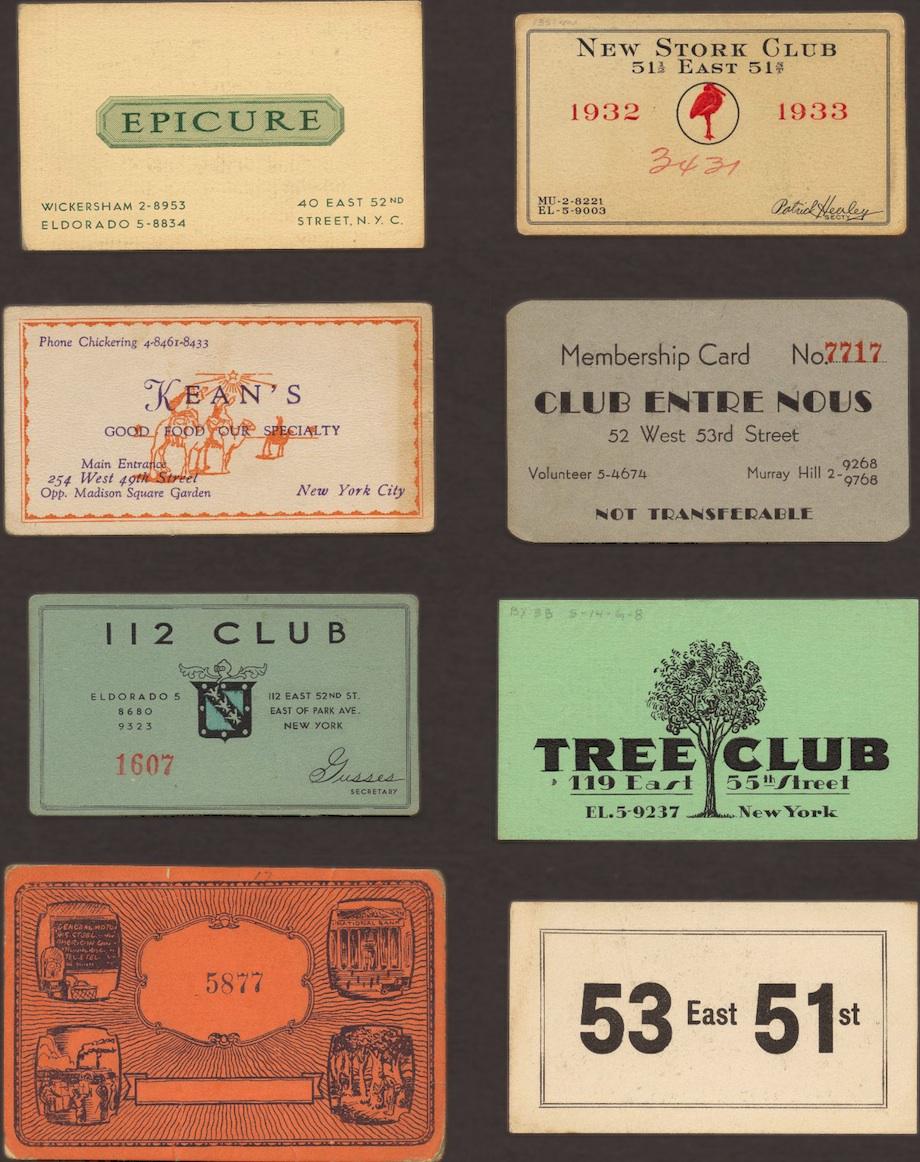The Vault is Slate’s new history blog. Like us on Facebook; follow us on Twitter @slatevault; find us on Tumblr. Find out more about what this space is all about here.
These speakeasy cards, collected between 1920 and 1933, served as certificates of membership and admission for illegal drinking establishments during Prohibition. While bouncers at some speakeasies could recognize all of their customers and other clubs used passwords, these cards were one more method of identifying the person standing at the door as somebody who should be let inside.
These cards represent clubs both famous and obscure. The card on the upper right would have admitted a partygoer to the glamorous Stork Club in its second home, which it moved into after it had been “raided out” of its first on West 58th Street. The Stork would stay at this East 51st Street location for only three years before moving up to East 53rd Street, where it would remain until its closing in 1965.
All of these cards are for establishments located on roughly the same latitude in midtown Manhattan. In the Prohibition years, according to Irving L. Allen, the blocks between 40th and 60th streets in Manhattan were rife with speakeasies. Fun with Google Maps reveals that the buildings housing these underground clubs now contain a variety of banks (Epicure), doctors’ offices (Kean’s), synagogues (Tree Club), and businesses offering search engine optimization and pest control (Club Entre Nous).
Previously on The Vault: Langston Hughes’ collection of cards advertising rent parties in Harlem.
